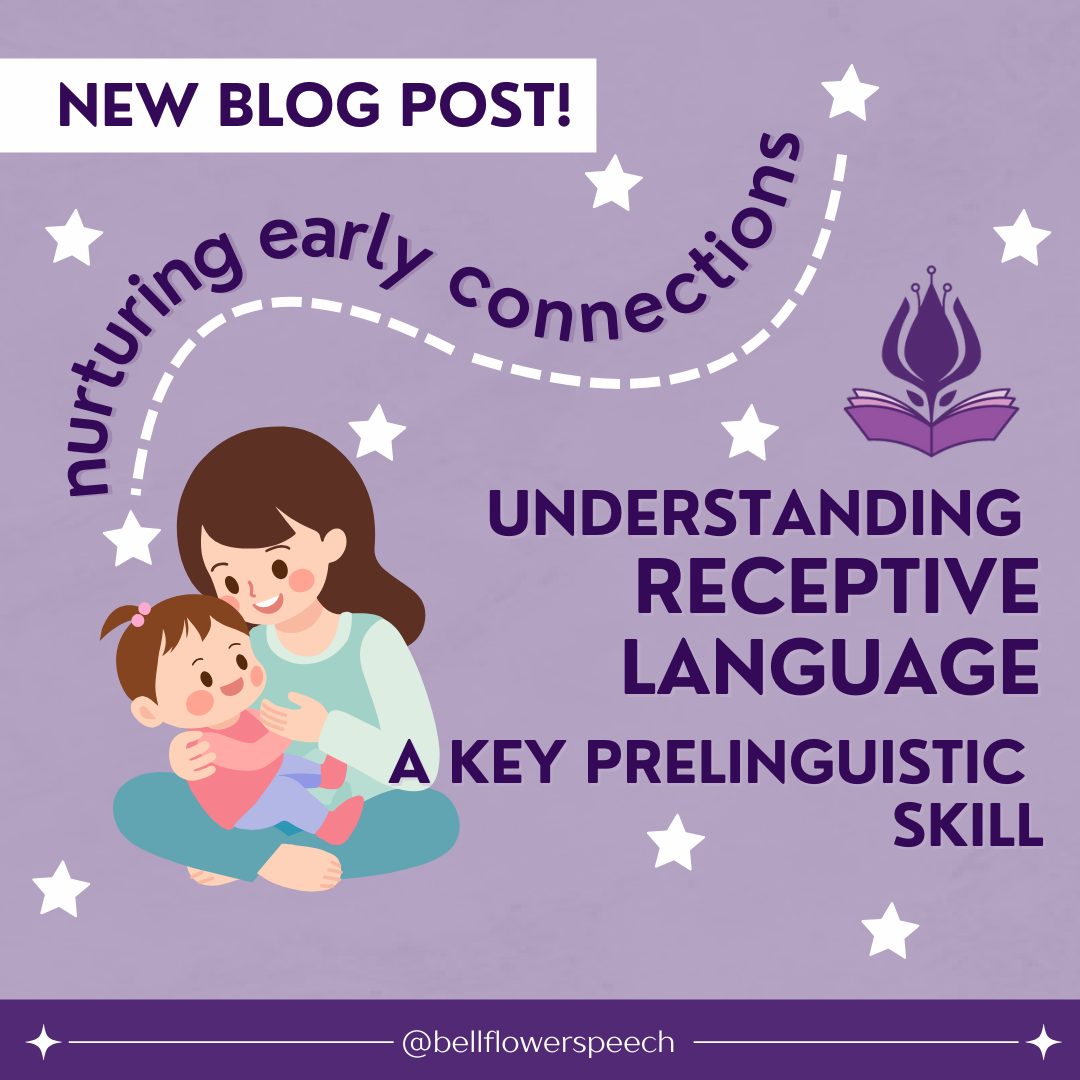Understanding Following Directions and Receptive Language: A Pre-Linguistic Skill
Welcome back to our Pre-Linguistic Skills Series! We’re so glad you’re here. As a speech-language pathologist, I stress the importance of pre-linguistic skills when creating individualized therapy plans for my clients. These pre-linguistic skills set the foundation for a child’s language and social skills. This blog post will be focusing on receptive language, and will offer simple and effective play ideas to help support your child’s growth at home. Visit our blog to read about other pre-linguistic skills in the series.
Click here to be redirected to our blog to learn more about pre-linguistic skills that come before receptive language, such as joint attention, turn-taking, and attention span.
So… What Are Pre-Linguistic Skills, and Why Are They Important?
In case you’re new to our blog series, I wanted to take a moment to define pre-linguistic skills and their importance.
Before a child can express themselves through words, they go through a period of building foundational communication skills, known as pre-linguistic skills. These skills are essential as they prepare children to engage in meaningful interactions with others, laying the groundwork for language development. Pre-linguistic skills involve the ways children use gestures, eye contact, and attention to communicate, typically before use of true words.
Mastering these early skills is key to later language and social communication success, and nurturing pre-linguistic skills, we’re setting children up to better understand and use words to express themselves.
What Is Receptive Language?
Receptive language refers to a child’s ability to understand spoken language, including words, phrases, and directions. It involves recognizing and processing language before they start speaking. Examples of receptive language look like when a child follows simple requests such as, “give me the ball” or “point to the dog.” When a child responds consistently and accurately to requests like these, it signals that they are understanding more language.
Why Is Receptive Language Important?
A strong foundation in receptive language is essential because a child must understand words before they can use them effectively. If we think about language as a bridge, receptive language is the first half. It allows the child to absorb and make sense of what they hear. This understanding of language supports future expressive language skills (or how they’re using language), which enables them to communicate their needs, share ideas, and connect socially.
Strategies to Support Receptive Language
Supporting your child’s ability to develop receptive language skills doesn’t require elaborate activities. In fact, some of the best strategies are those that you can incorporate into your everyday routine and activities. Here are a few ways to help build these foundational skills:
Stay Together
Spend time with your child at their level, so they can make a clear connection between your words and actions. When you’re engaged in the same activity or routine, children can more easily link meaning to what you say.
Keep It Simple and Narrate Daily Events
Use short, simple sentences as you go through your day. For example, “Let’s wash hands” or “Time to eat.” Consistently hearing the same phrases helps children associate words with actions, building vocabulary.
Use ‘Tell, Show, Help’ Cues
When giving a direction, start by telling your child what to do, then show them by modeling the action, and finally help them if needed. For example, say, “Put the block in,” show them how, and gently guide them if they need assistance. Over time, your child will learn to understand and complete these tasks on their own.
Encourage ‘Do Your Part’ in Routines
Incorporate small tasks that allow your child to participate actively. During mealtime, encourage them to “put the spoon in the bowl,” or during bath time, “put the toy in the tub.” Small steps like these build their confidence in following directions and understanding what’s expected. It might initially make that routine take a little longer, but it will pay off in the long run.
Building receptive language is all about finding moments in everyday routines where we can encourage understanding. By starting with these small steps, you’re helping to create a world of language for your child to explore and engage with.
Stay tuned for our next post in our Pre-Linguistic Skills Series, where we’ll be talking about vocalizing - what it is, the importance of vocalizing, and strategies to support your child.
Do you have concerns about your child’s receptive language? We’re here to help you with all of your speech and language needs! Contact us for more information about our services.


